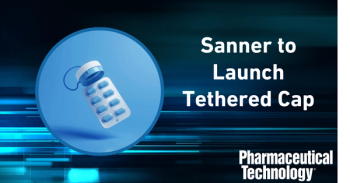
Harnessing Real-World Evidence to Future-Proof Drug Development
Key Takeaways
- RWE is essential for post-market safety monitoring, revealing side effects not identified in clinical trials, and is now a staple in pharmacovigilance activities.
- Regulatory agencies like the FDA and EMA are developing infrastructures to facilitate RWE integration, supporting decision-making throughout a product's lifecycle.
Real-world data can be utilized to ensure quality and effectiveness of drug products.
The pharmaceutical manufacturing sector is currently navigating an era defined by accelerating complexity, personalized medicine, and rigorous regulatory scrutiny. For manufacturers, the use of real-world evidence (RWE) has become a fundamental, mandatory asset that enhances drug safety, streamlines regulatory compliance, and accelerates future drug development pathways.
RWE is derived from real-world data (RWD) based on collected patient health information from such sources as electronic health records, medical claims, and product or disease registries (1, 2). RWE is clinical evidence about the usage, benefits, or risks of a drug product and is derived from analyzing RWD (1,3). Successfully integrating RWE into development and manufacturing protocols can maintain both product integrity and regulatory advantage.
Is RWE a mandatory component of the drug lifecycle?
For pharmaceutical manufacturers, the most immediate and critical application of RWE is in monitoring post-market safety. The lifecycle of a drug product does not conclude once it reaches the market; rather, it extends beyond approval, relying on data from patient use to inform continued safety testing (4).
RWE is a part of pharmacovigilance activities (4,5). Manufacturers must gather RWE for the entire time a product is on the market (4,5). This is essential because, while side effects and indications are identified in clinical trials, opening the drug up to the greater population often reveals additional side effects, as the product affects individuals differently, particularly outside the controlled environment of a clinical trial (4, 5). Whereas RWE collation may not have been required in the past, it is now expected to be a staple because of benefits it delivers (4,5).
How are data infrastructures built?
Regulatory agencies are building infrastructures to facilitate RWE integration. In the United States, FDA’s Center for Drug Evaluation and Research (CDER) established the Center for Real-World Evidence Innovation (CCRI) to coordinate and advance the use of RWD and RWE in regulatory decisions (1). In Europe, the European Medicines Agency (EMA) advises using high-quality RWD in decision-making and is creating a flexible framework to deliver rapid access to and analysis of RWD throughout a product’s lifecycle (1,2). Resources for manufacturers include the public electronic RWD catalogues launched by EMA and the Heads of Medicines Agencies, which can help identify suitable data sources for research and assessment of study protocols (1, 2,6).
In addition, EMA's DARWIN EU (Data Analysis and Real-World Interrogation Network) project collects data from approximately 130 million patients across Europe and provides timely and reliable evidence on the safety and effectiveness of drugs (7). The project is designed to respond to scientific committees and national competent authorities by carrying out non-interventional studies, with goals to conduct 140 studies annually from 2025 onward (7).
How does RWE enhance patient-centric innovation?
Beyond mandatory safety monitoring, RWE is fundamentally tied to the industry’s push toward patient-centric and personalized therapies. Regulatory agencies are encouraging developers to gather and include patient experience data throughout a drug’s lifecycle (5). Patient perspectives are considered to be of "great value" and play a crucial, complementary role to scientific data during regulatory review (5).
By including RWE, companies can leverage patient data for adaptive regulatory pathways (8). For drug developers exploring novel therapies, RWE can be gathered from existing research or post-market drugs to help choose a drug development direction, such as investigating new cell therapies for oncology (4). RWE can help fill knowledge gaps quickly and offer tailored analyses that traditional clinical trials often cannot (2).
Prioritizing RWE generation and analysis can help pharmaceutical manufacturers ensure comprehensive safety monitoring, align with global regulatory mandates, and gain crucial insights necessary to drive the next generation of effective, patient-tailored treatments. Embracing RWE may establish a competitive advantage in a data-driven world.
References
- Haigney, S. FDA Creates CDER Center for Real-World Evidence Innovation. PharmTech.com. Dec. 13, 2024.
- Barton, C. Using RWD in Non-Interventional Studies. Pharmaceutical Technology Europe2024 36 (6) 10–11.
- Haigney, S. FDA Publishes Guidance on Real-Word Data. PharmTech.com. Dec. 21, 2023.
- Schniepp, S. J., and Siegfried S. Ask the Expert: Questions about Real-World Evidence and Supply Chain Security. PharmTech.com. Sept. 25, 2025. https://www.pharmtech.com/view/ask-the-expert-questions-about-real-world-evidence-and-supply-chain-security.
- Haigney, S. EMA Looks to Include Patient Perspectives in Drug Regulation. PharmTech.com. Sept. 30, 2025.
- Haigney, S. EMA and HMA Launch Real-Word Data Catalogues. PharmTech.com. Feb. 16, 2024.
- Haigney, S. Europe's DARWIN EU Data Program Adds Capacity. PharmTech.com. March 8, 2024.
- Challener, C. A. Personalized and Patient-Centric Administration of Oral Medicines. Pharmaceutical Technology2025 49 (7) 14–17.
About the author
Susan Haigney is Lead Editor for Pharmaceutical Technology®.
Newsletter
Get the essential updates shaping the future of pharma manufacturing and compliance—subscribe today to Pharmaceutical Technology and never miss a breakthrough.





